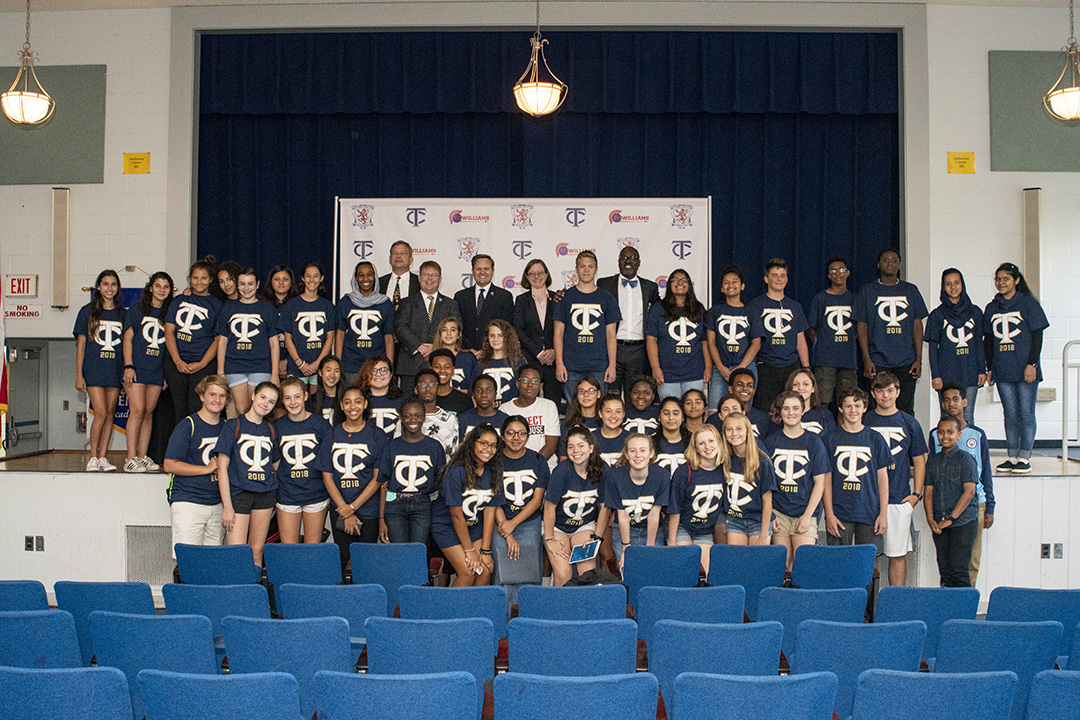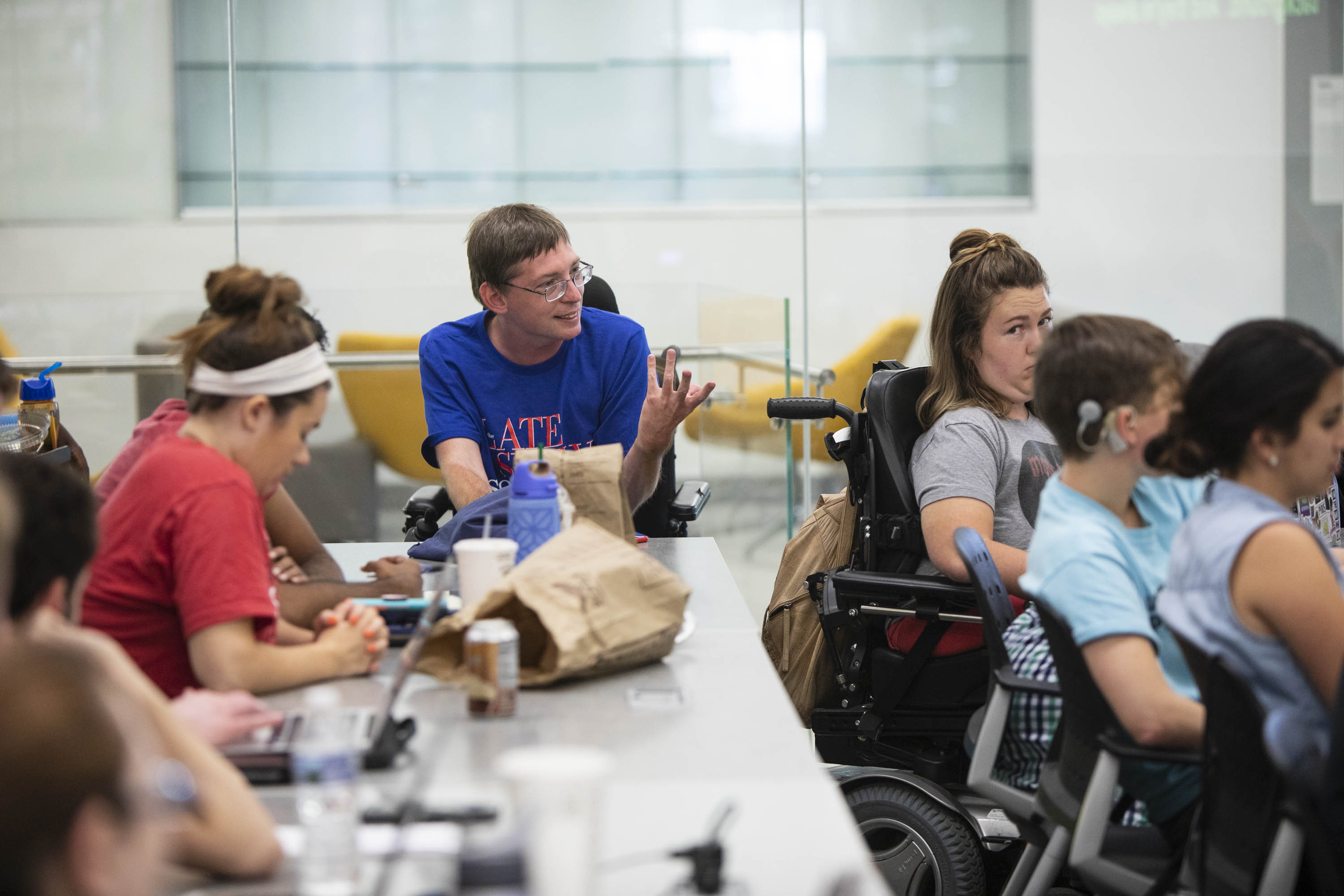By B.L. Wilson
Starting in September, ninth graders at T.C. Williams High School in Alexandria, Va., will be able to start on the path to careers in health care and be eligible to begin earning dual enrollment credits from the George Washington University School of Medicine and Health Sciences (SMHS)
Designated as a Governor’s Health Sciences Academy, the program at T.C. Williams is the result of a strategic partnership between GW and the Alexandria City Public Schools.
Reamer Bushardt, professor of physician assistant studies and senior associate dean for health sciences in SMHS, addressed the inaugural cohort of 103 students last Friday on the Minnie Howard Campus of T.C. Williams High School.
“One of the hopes we have for this academy is not just that students will learn new knowledge and skills, but that they will also develop a network of professionals,” he said, “that really help you make important decisions about what’s next for you in college or your career.”
The rising ninth graders had just completed a two-week summer bridge program designed to bolster their preparation for college-level dual enrollment courses and introduce them to the vast array of career possibilities in health care.
Day one, they were introduced to Kevin O’Connor, associate professor of medicine and senior medical advisor for health sciences programs at SMHS, who explained that medicine and health care now involve more than just a physician or a nurse but a team of professionals. He also accompanied them on a field trip to the Smithsonian Natural History Museum, where among other activities, they explored an exhibit on epidemics and disease outbreaks.
At the event last Friday, Dr. O’Connor related his own personal journey in medicine that involved a 22-year stint in the Army that culminated in an appointment as a White House physician in three administrations.
“The only reason I just bored you with that little bio is to point out that every one of you is way ahead of where I was when I was in your shoes,” he said, noting that all he knew about medical careers involved doctors and nurses.
Over the summer, the students heard from a pharmacist, a medical laboratory scientist, a biomedical informatics expert, a nurse, an emergency medical professional and other health professionals. As a capstone project, students conducted research on careers in health care that were displayed on posters and presented in the high school library.
Mya Lopez chose to study pulmonology after finding out about an epidemic of black lung disease among coal miners in Appalachia. “My grandfather on my mother’s side has lung issues,” she said. “I want to see if I can actually become a pulmonologist and help people more.”
She discovered it could take up to 12 years for her to fulfill the undergraduate, medical school, residency and fellowship requirements.
“I am going to try and be the first one in my family to go to GW,” said Ms. Lopez.
A curriculum steering committee jointly led by GW and T.C. Williams mapped out a four-year program that will offer entry-level health and science courses the first two years to help students decide which of seven career paths they want to follow, courses that could serve as a pipeline into the workforce or to college.
Dr. Bushardt said the academy provides an opportunity for GW and key stakeholders in Northern Virginia to address health care workforce shortages and help create a fully-qualified workforce that better reflects the diversity of the community it serves.
“When you can recruit and train regionally, you can benefit from students with homegrown cultural competency. Then, hiring graduates into jobs in their own communities means we build a workforce that has a better understanding of the patients and families that are being served. That’s what we are trying to do here,” he said.
Nearly two years after arriving in the United States from Afghanistan, best friends Muqhgan Hakimi and Wisna Bakshi were worried about the challenges of just dealing with the language.
“We are new learning English. We are nervous, and we didn’t think we could finish the project fast,” said Muqhgan.
They researched the work environment, employment prospects and salaries for surgeons, as a part of their capstone presentation.
“We finished it in two days, and we are happy for that,” she said.



